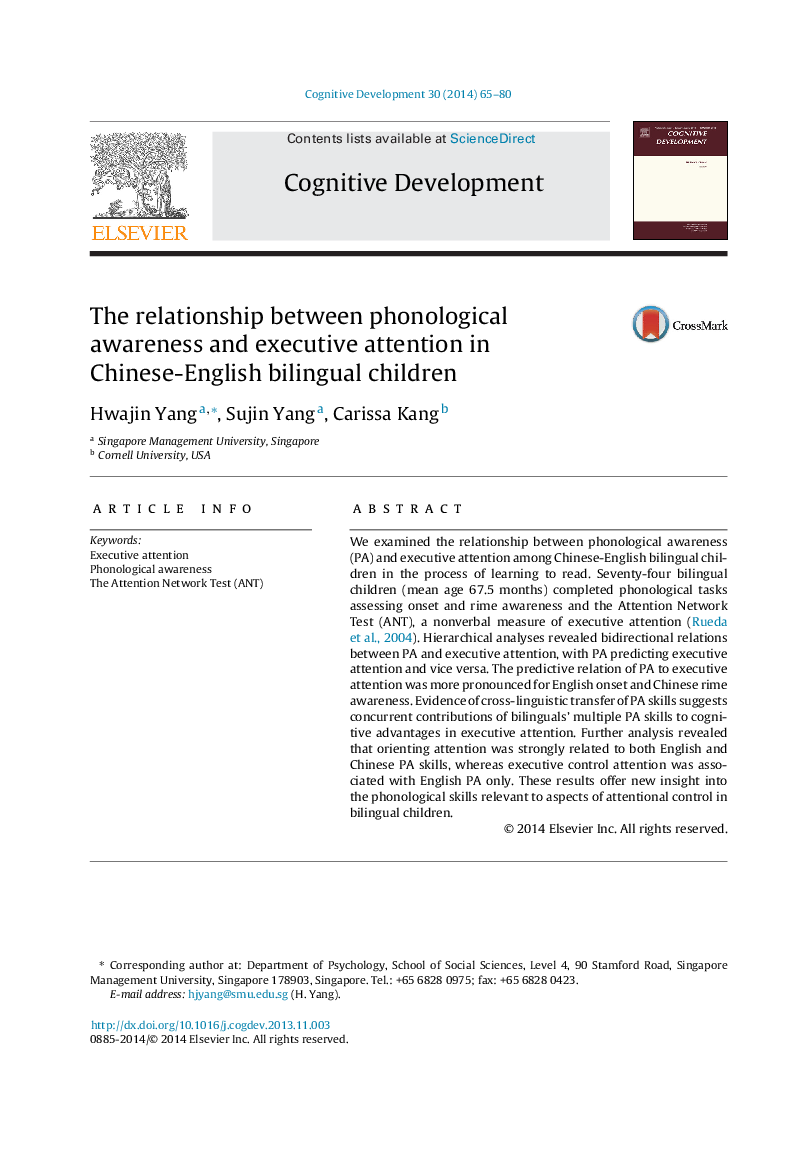| Article ID | Journal | Published Year | Pages | File Type |
|---|---|---|---|---|
| 916481 | Cognitive Development | 2014 | 16 Pages |
•Bidirectional relationships exist between phonological awareness (PA) and executive attention, with PA predicting executive attention and vice versa.•The predictive relationship of PA to executive attention was more pronounced for both English-onset and Chinese-rime awareness.•Orienting attention was strongly related to both English and Chinese PA skills, whereas executive-control attention was associated with English PA only.•Evidence for cross-linguistic transfer of PA skills suggests potentially concurrent contributions of bilinguals’ multiple PA skills to cognitive advantages in executive attention.
We examined the relationship between phonological awareness (PA) and executive attention among Chinese-English bilingual children in the process of learning to read. Seventy-four bilingual children (mean age 67.5 months) completed phonological tasks assessing onset and rime awareness and the Attention Network Test (ANT), a nonverbal measure of executive attention (Rueda et al., 2004). Hierarchical analyses revealed bidirectional relations between PA and executive attention, with PA predicting executive attention and vice versa. The predictive relation of PA to executive attention was more pronounced for English onset and Chinese rime awareness. Evidence of cross-linguistic transfer of PA skills suggests concurrent contributions of bilinguals’ multiple PA skills to cognitive advantages in executive attention. Further analysis revealed that orienting attention was strongly related to both English and Chinese PA skills, whereas executive control attention was associated with English PA only. These results offer new insight into the phonological skills relevant to aspects of attentional control in bilingual children.
